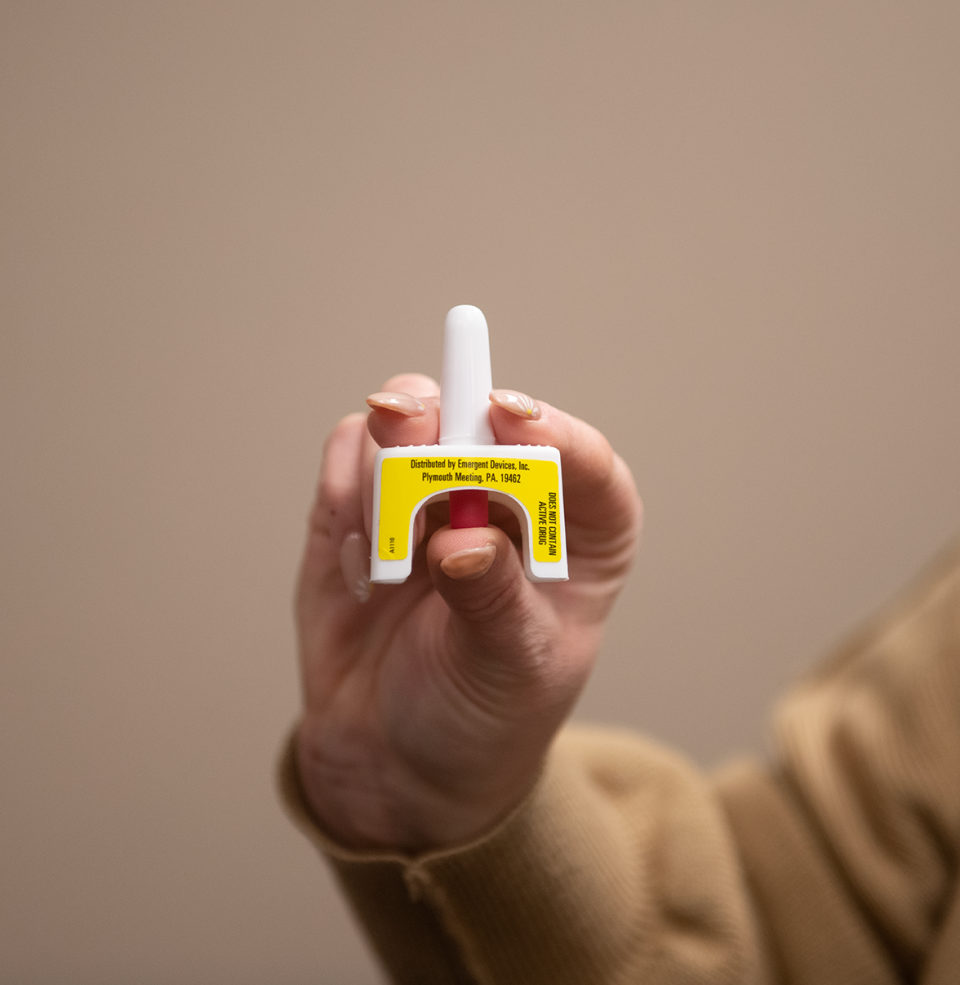Arizona counties to get opioid overdose reversal drugs as part of $500M settlement
- Oops!Something went wrong.Please try again later.
Five county health departments across the state will receive thousands of doses of opioid overdose reversal drugs next year as part of Arizona's settlement with pharmaceutical giant Teva.
Democratic Attorney General Kris Mayes in early December ordered shipments of the drug naloxone in lieu of cash from Teva Pharmaceutical, though Mayes' office says the state will still receive millions over the next 13 years as part of the settlement.
Supplying the lifesaving drug is one part of Mayes' agenda to combat the growing fentanyl crisis as she heads into her second year in office. In an interview last week, Mayes said she would also form an advisory commission to help prioritize how to spend some of the about $500 million from opioid settlements that is headed to Arizona for state use.
Mayes this month extended invitations to legislative leaders and Gov. Katie Hobbs, also a Democrat, to have voices on that commission, she said. Lawmakers must appropriate the settlement money in the state budget each year.
"Arizona is the fentanyl funnel for the rest of the country," Mayes said. "The drug cartels are using our state like UPS and they are bringing it across our border and redistributing it to the rest of the country."
Mayes said she asked Vice President Kamala Harris and U.S. Drug Enforcement Administrator Anne Milgram for more federal resources to help stop drug trafficking and address the immigration crisis, which Mayes said has pulled personnel away from work targeting drug smugglers.
In the interim, investigations by Mayes' office have led to the seizure of over 16.7 million fentanyl pills this year, a spokesperson said. That's an increase from 6.5 million in 2022, according to Mayes' office.
Naloxone coming to Arizona counties
The fentanyl crisis and shortages of the drug sometimes known by its brand name, Narcan, warranted giving counties a supply of the life-saving drug instead of cash, Mayes said.
"I'm going to distribute those every four months to different organizations and entities," Mayes said. "This first batch, which will go out in June, will go to county health departments, which are running dangerously low on naloxone."
The following counties will receive shipments, and were picked based on need and storage capabilities, according to Mayes' office: 900 units to Yuma County; 3,000 to Pima County; 1,200 to Navajo County; 1,200 to Mohave County, and 700 to Gila County. The units each have two doses of naloxone, both of which are often necessary to prevent an overdose.

In Pima County, overdoses have risen dramatically in the last three years and will surpass 500 deaths this year, according to Mark Person, a Pima County Health Department behavioral health and substance abuse program manager. Fentanyl is the main driver of those overdoses, Person said.
The county has distributed naloxone through nearly 200 agencies, nonprofits, businesses and community groups since 2019. The first year, the county distributed 1,500 naloxone units, Person said. This year, they've distributed an average of 1,200 units a month, he said. Two times in the last several years the county has run out of naloxone.
The incoming shipment will serve as a cushion to keep the county's supply steady, Person said.
"What we do now is kind of like a paycheck-to-paycheck scenario," Person said. "We get our allocation and it does the job, we have it, but it's gone by the end of the month."
In Yuma County, Health Department officials work with community groups to get naloxone to schools, first responders and others who work with people in crisis.
“While we know there is no single solution to this problem, getting a lifesaving medication like naloxone into the hands of those that need is most, is a commitment to safety, and a critical strategy in preventing future opioid overdoses," Diana Gomez, the county's chief health officer, said in a statement. Gomez said the forthcoming supply "will increase the capacity and sustainability of our naloxone distribution program by ensuring that cost and availability are not a barrier.”
Arizona and county and municipal governments here are expected to receive over $1 billion from a series of legal settlements related to the opioid crisis of recent decades, during which painkiller manufacturers and prescribers flooded markets with the addictive drug.
Many of those cases predate Mayes' election to office, but she will have considerable control over how the money is spent within guidelines set in a spending agreement. County leaders too are planning how to prioritize hundreds of millions that make up their share settlement funds over the next 18 years, but few have detailed plans and some are wary about misdirecting the money as happened with tobacco settlements of the 1990s.
Teva in June reached a final agreement to settle lawsuits. That agreement includes providing states 9.6 million naloxone kits and paying out over $4 billion. Arizona will also get over $85 million in cash over 13 years, according to Mayes' office.
Reach reporter Stacey Barchenger at stacey.barchenger@arizonarepublic.com or 480-416-5669.
Plans up in the air: Arizona counties are getting opioid settlements, but still deciding how it will be spent
This article originally appeared on Arizona Republic: Arizona counties get overdose reversal drugs to combat fentanyl

